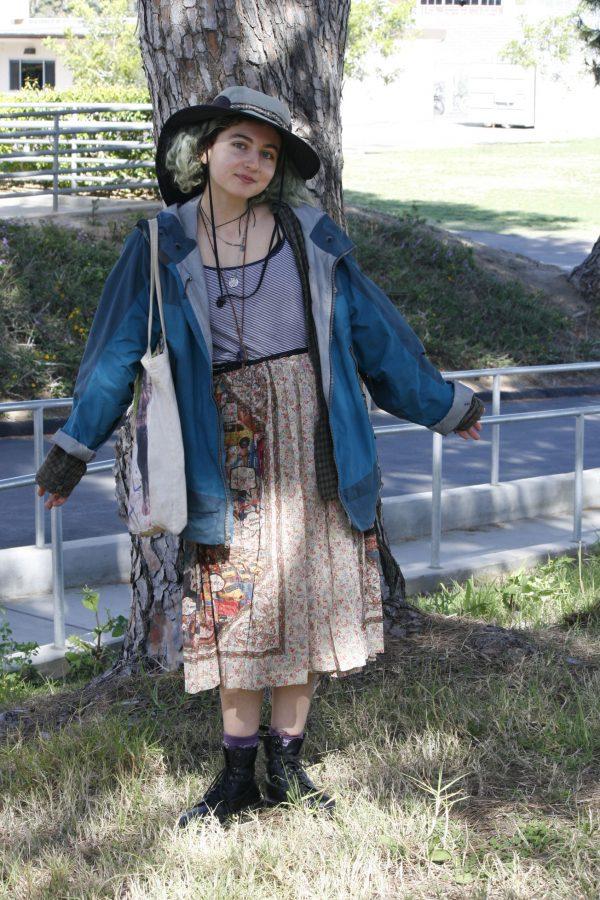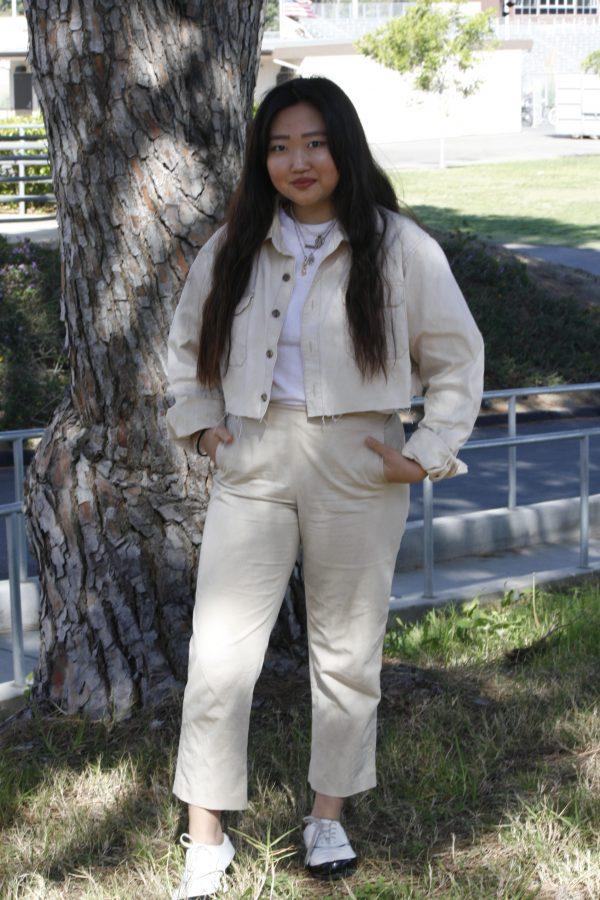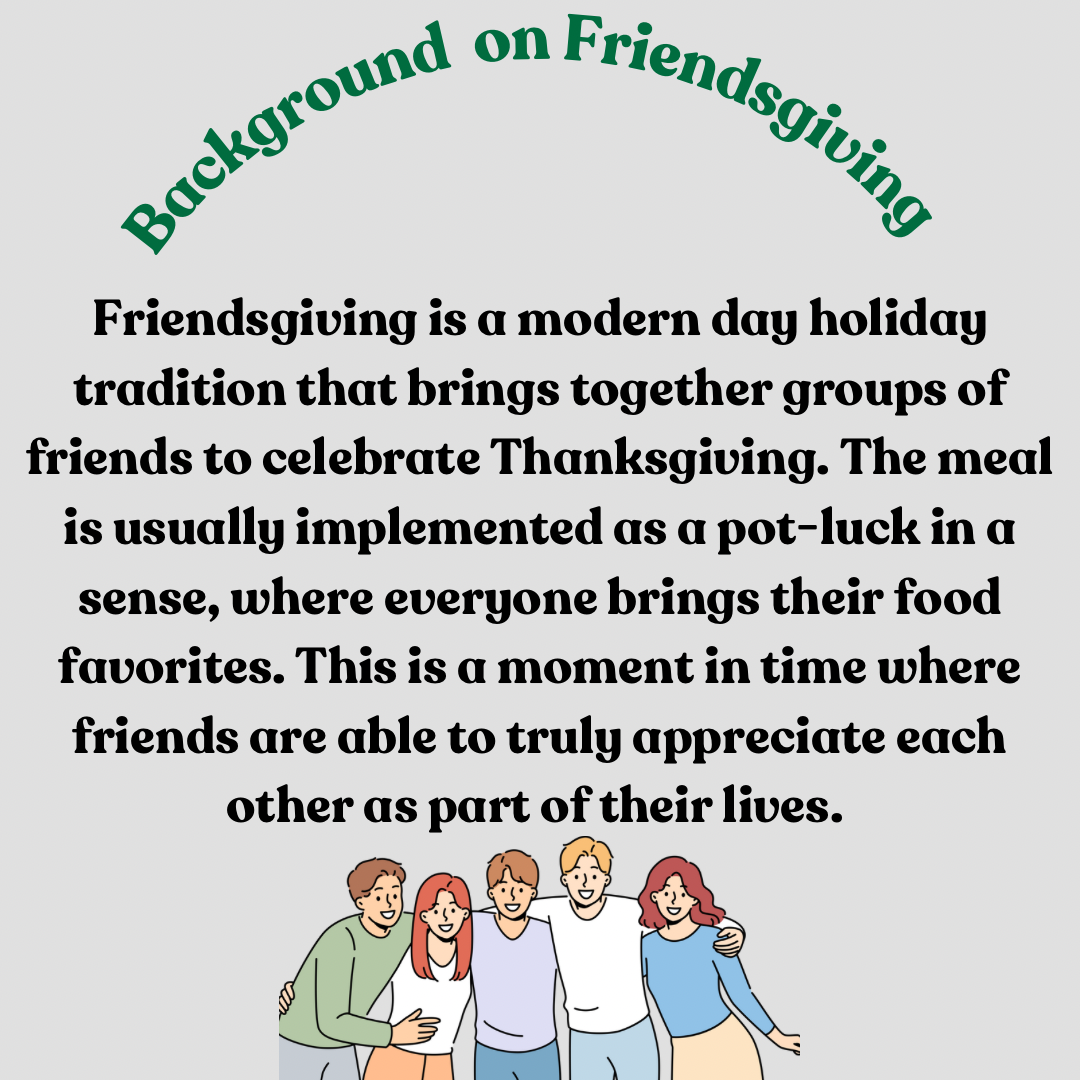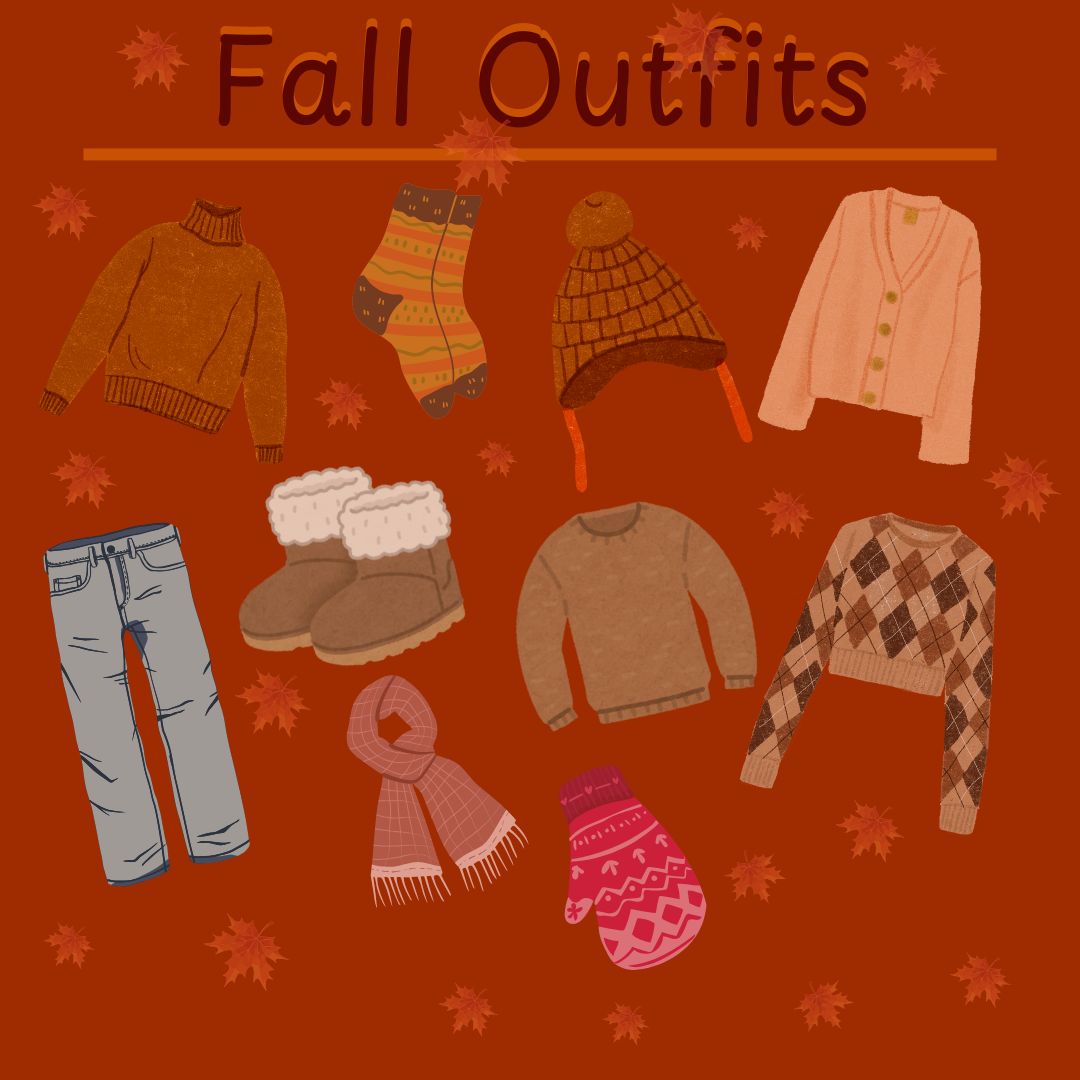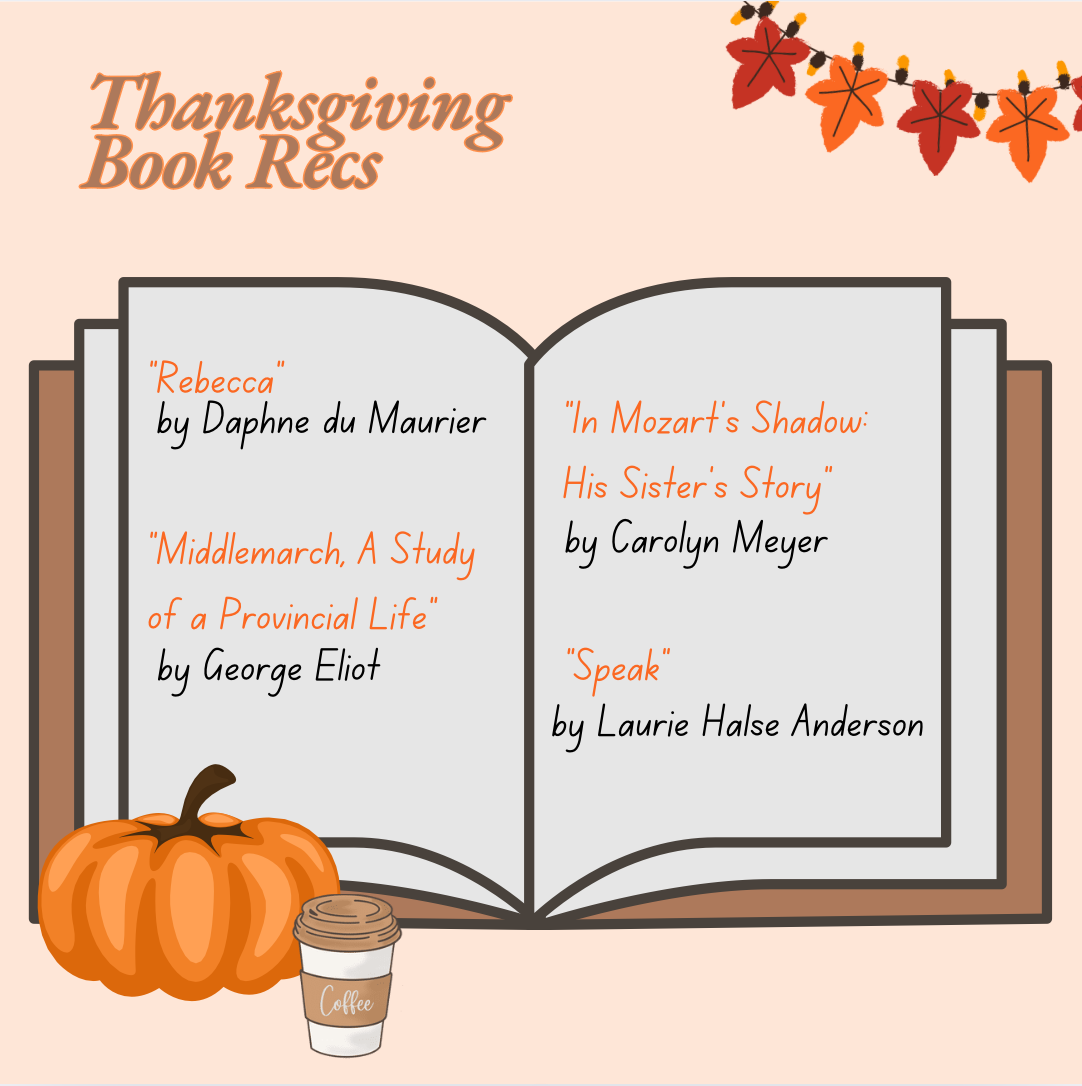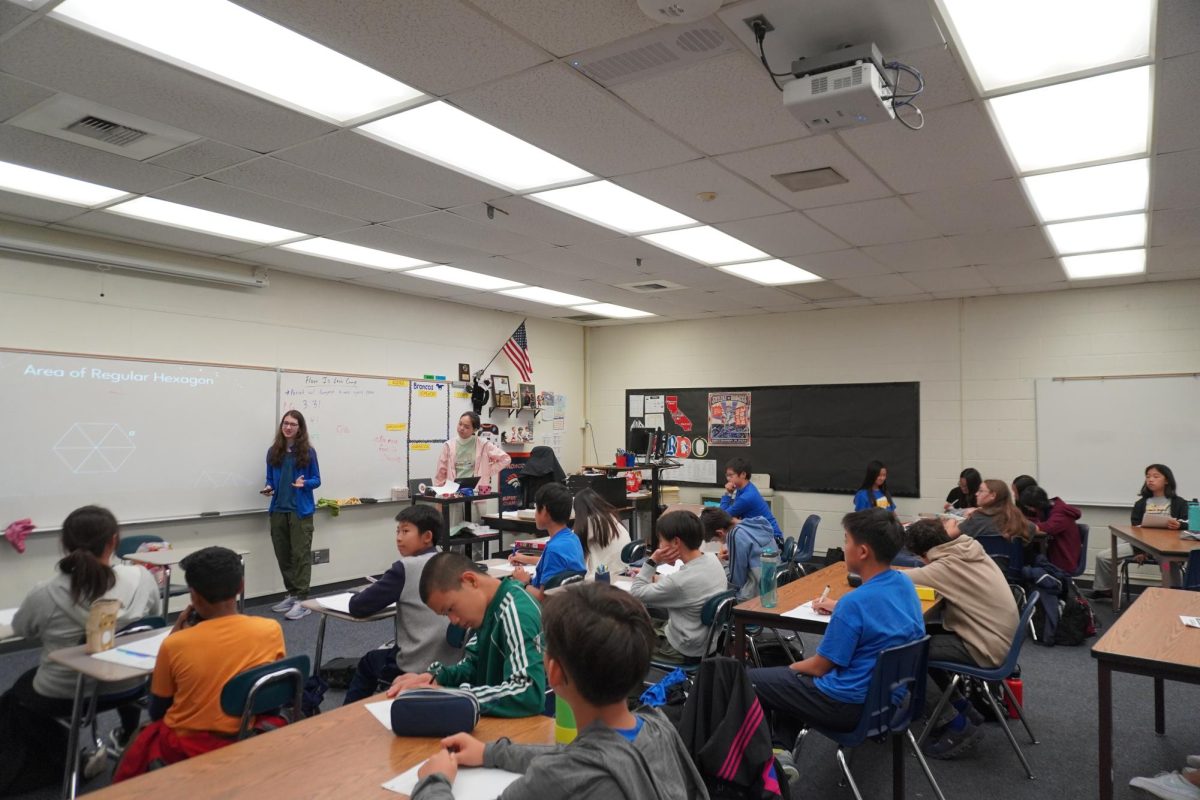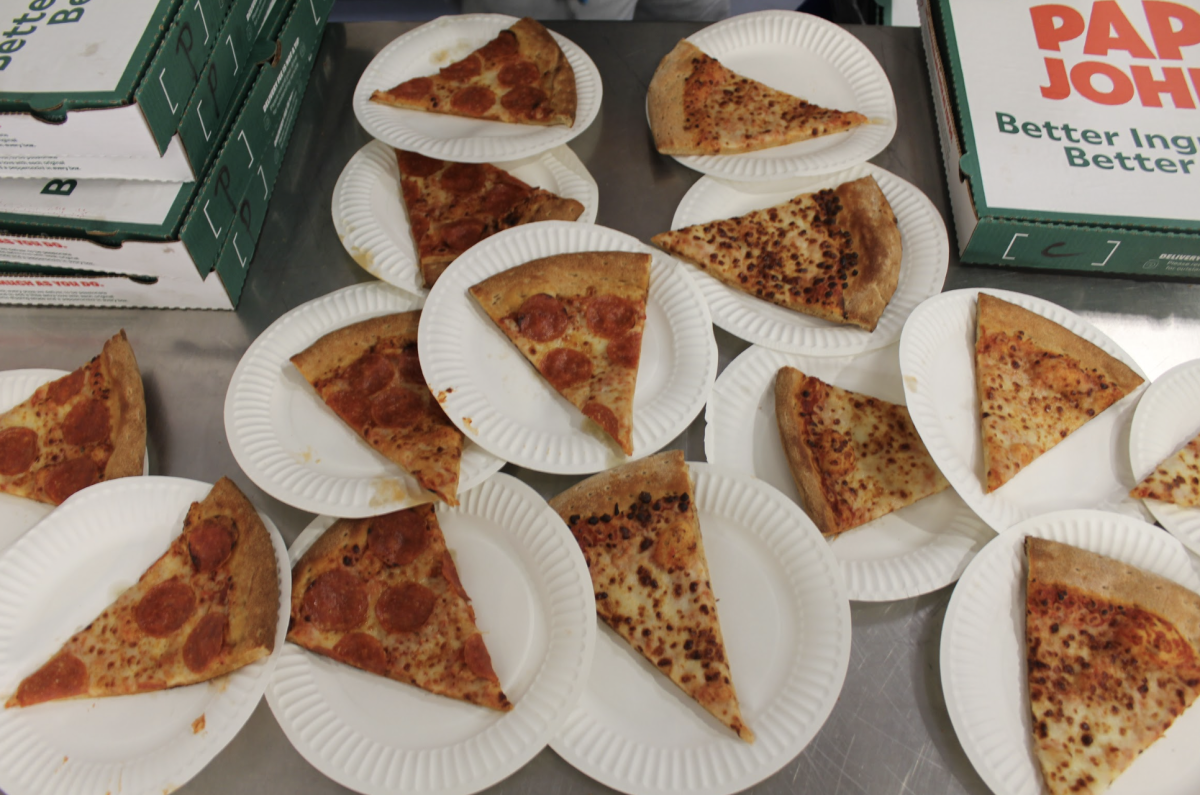Junior Taylor Han's soft, cream outfit, with a Patagonia jacket, an old band t-shirt, and golf shoes.
BY AMERAH ELSISY
Staff Writer
Updating your wardrobe can come with some challenges. For example, money — it could cost hundreds of dollars just to get 1 or 2 outfits. Another problem is style. Going from store to store, we see the same trends copied a million times everywhere we look. Also, the fast-paced cycle of creating new, trendy clothes and getting rid of old, out of style clothes can cause problems for the environment and exploits workers in developing countries.
If you want to start experimenting with your style, but don’t want to spend too much money, hurt the environment or get something that everyone else is wearing, thrifting is a great option that can solve all these problems. Many students at UHS love thrifting and have been doing it for a while. They love showing off their new looks and offer great advice on how thrifting can work for anyone.
Let’s start with experimentation. Senior Danny Rozenblit loves to play around with different patterns and colors, without any strict plan in mind.
“In the morning, I think, ‘what’s the vibe today, what’s my mood?’ Sometimes my outfit is bright and happy and sometimes it’s just all black,” Rozenblit said.
And, although his outfit selection varies, he does have his preferences. “Yellow is my go-to. I have been really attracted to yellows,” he said. “I like navy a lot, too. And I’m always down for a horizontal striped shirt. I also like big jackets.”
Although his aesthetic is simple, he has a lot of fun mixing and matching the essentials.
“My outfit is usually a jacket or sweater that’s over a t-shirt, some jeans and a pair of shoes. It’s pretty basic, but I like to mix it up,” Rozenblit said.
Thrifting is a great option for people who want to try out new styles without having to risk spending too much money, and Rozenblit has plenty of experience with that.
“I bought this ugly dad sweater a while ago, and I just didn’t like it, but it was only five bucks,” he said. “So I can [afford to] be more experimentational with my style.”
Thrifting is also great for people who do not want to confine themselves to one look, like Rozenblit.
“I don’t really have a specific style, it’s like dad on vacation, meets preppy, meets vintage….I don’t know!” Rozenblit admitted.
Another beauty of sifting through second-hand items is having the goal of finding something that is strange and interesting. Instead of conforming to the current fashion trends, many thrifters want something weird.
“There’s like a whole kind of fashion style now based around thrifting that’s really cool,” Rozenblit said. “At its core, thrifting is about finding something that’s different than what everyone else is wearing, but at an affordable price.”
Another positive aspect of thrifting is that not only does it not conform to the trends of fashion stores, but also to the trends of our era. Many students, like Senior Sarah Basileh believe that this presents many interesting possibilities.
“I think we have an opportunity, living in the 21st century, to time travel in a way, and choose whatever style we want to have,” she said.
Basileh, who has been thrifting since she was 14, added that, “You can dress wild and just have fun… I grew up with hand-me-downs, so I never was afraid of the idea of used clothes.”
For Basileh, thrifting was love at first sight.
“When I went to my first vintage store, I was actually fascinated by the different patterns, and different styles of jackets. I really liked the different colors, different fabrics and different cuts,” she said.
To experienced thrifters like Basileh, another appeal is that it seems to be representative of the past and of history, with clothing from almost every decade on hand.
“I really like the ‘70s, with their cheesy t-shirts, and overalls and boot cut jeans. It’s very hip,” Basileh said. “But I also like adding a piercing to my face, or maybe goth boots, just to mix it up.” She likes to combine styles from different decades, to create something altogether different.
Basileh also has a romantic view about thrifting, and believes that borrowing clothes is an intimate ordeal.
“It felt like I was borrowing it from a sister or a friend, but instead in this case it was a stranger. I liked the anonymity; it gives it character and charm,” she said. Basileh’s love for thrifting is entwined with her love of lost, strange things. “It felt like I was sorting through history itself. There’s always a gem if you look long enough.”
For Basileh, thrifting has an appeal that goes deeper than the surface.
“I don’t think that people should continue to keep using new things and then throw them away. I definitely love recycling clothing and extending its life,” she said.
Fast fashion, or the practice of stores creating new clothes for every season, has extremely negative effects on the environment, and thrifting is one way to combat that. “I think thrifting can be a form of activism, because you’re putting less pressure on the market to produce clothes for people. If people were reusing, there would be less demand,” Basileh said.
Junior Taylor Han also cares about the environment, and believes thrifting is the way to go to combat fast fashion and retailers’ exploitative practices.
“I want to support independent artists and fashion designers. I don’t like Forever 21 and places like that,” Han said. “They actually steal designs from independent sellers and sell them at a cheaper price, but it’s also low quality, and their feeding into sweatshops.” Han has strong beliefs, and backs them up with her wallet. She goes thrifting about once a week, and gets two or three pieces a week. Even though most of her clothes are thrifted, style and comfort is not sacrificed.
“I would say my aesthetic is… my mom from the 90s!” Han said. “[And] I unintentionally wear a lot of reds. Red is such a bold color, and I guess it just attracts me to it.” Han has talent when it comes to layering colors and jewelry, to create an fresh, interesting look.
She also has advice for more resourceful shoppers. “I really like scarves. They can be worn in many ways, sometimes as shirts, or as a headband. They’re really versatile.”
Another aspect of thrifting is all about making connections with clothing pieces that would not seemingly go together.
“Don’t follow fast fashion. People just want to conform to what other people are doing. Just wear what makes you comfortable in your own skin and what works for you,” Han advised.
Senior Dillon Cranston has similar opinions about personal style. “Fashion is all about feeling comfortable… Your clothes are a reflection of your personality, so what you’re wearing doesn’t make you feel like you’re putting on a facade.”
Although Cranston has only started thrifting since last summer, he is already in love with it. “It’s like a treasure hunt, almost. You’re thrifting through these piles of clothes, and it’s exciting to find something you like,” Cranston said.
With a passion for high end fashion brands, Cranston found himself at a roadblock.
“I didn’t have lot of money, and I still don’t,” he said. “When you thrift, you can get a lot of good deals if you look for them.”
According to Cranston, you can have access to normally expensive clothing if you just know where to look.
“There are a bunch of really cool consignment shops in Los Angeles,” he said. “It’s where you can buy high end brands second hand. I already know the brands I like, so I just try to find them at a good price.”
Some of Cranston’s favorite brands are Acne Studios and Story Et Fall, a niche French shoe brand. “I try to go for a low budget Saint Laurent aesthetic, but it’s low budget not by choice.”
As a beginner, Cranston also had some dilemmas. “Do not buy something just because it fits you, that was my big mistake,” he advised. “It can be easy to overspend, since the prices are a lot cheaper and there are so many possibilities. Don’t buy anything unless you love it. [And] if you want to start wearing thrifted clothes, you should start by easing into it. They could be really good accent pieces.”
The most important thing to keep in mind when thrifting is to just have fun and enjoy what it stands for.
“I love finding old pieces because they have that history to them,” Cranston said. “You find a bunch of really cool things that you weren’t necessarily looking for. Before you, somebody else was wearing it too, and now you can make it your own.”



